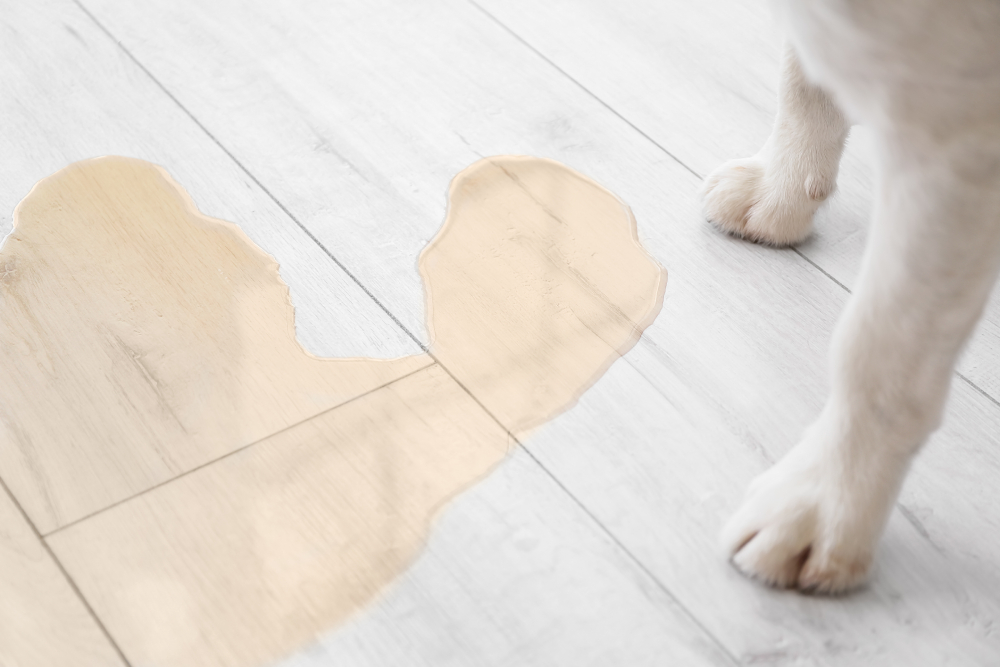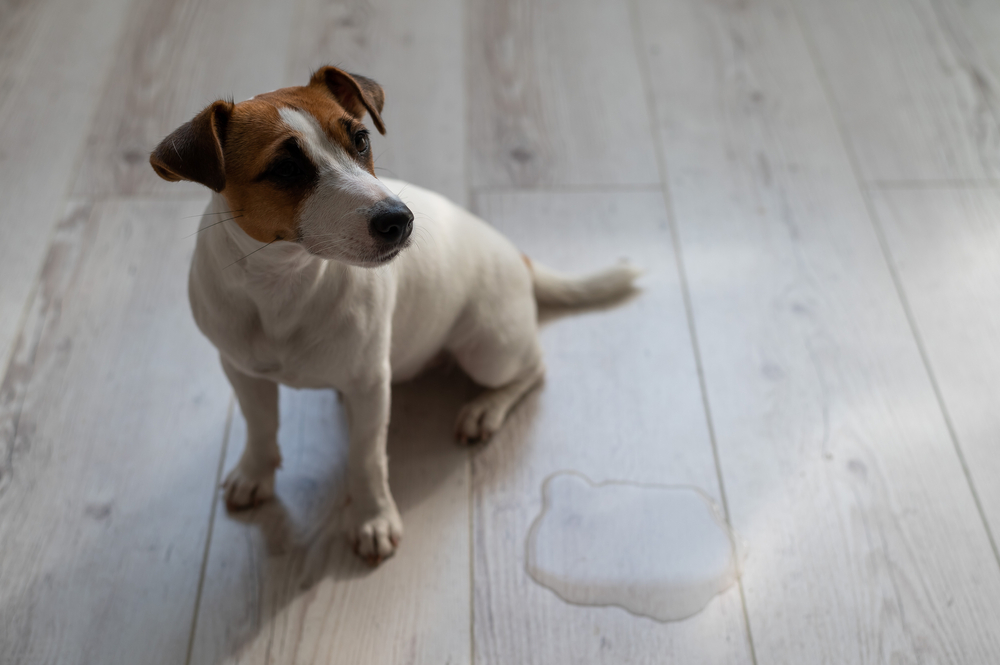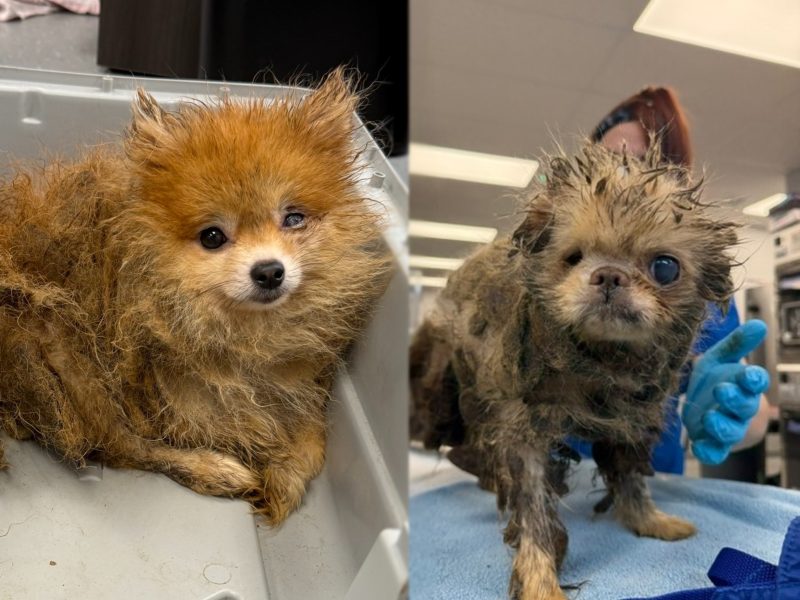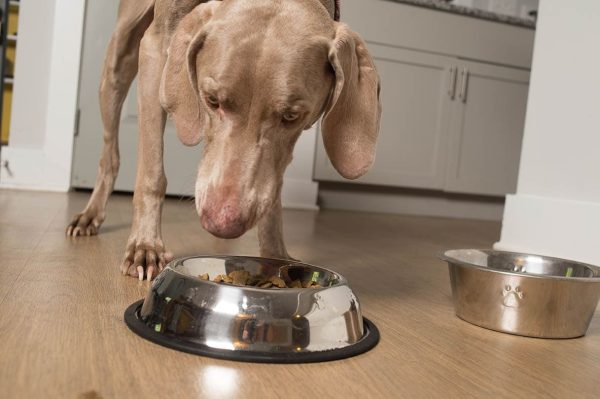Dogs can start to experience urinary issues as they age, particularly with female dogs. Female dogs that have been spayed can start to experience incontinence due to having lower estrogen levels. Most cases of incontinence are permanent, but they can be treated with medication to manage urine leakage.
If you notice any abnormal behaviors or urinary issues in your dog, it’s best to schedule an appointment with your veterinarian for a check-up. Your veterinarian can diagnose the cause of the urinary issues and provide applicable treatment options.

What Is Spay Incontinence?
Spay incontinence refers to female dogs that start to have difficulty holding their bladder or experience increased urine leakage after getting spayed. It’s linked to lower estrogen levels caused by the removal of the ovaries during spay surgery. This can inhibit the urethral sphincter muscles from working properly, which allows urine to leak out.
Between 5–20% of spayed dogs develop spay incontinence when they reach middle adulthood and older adulthood.1 Dogs that are over 45 pounds are more likely to have spay incontinence than smaller dogs. The following dog breeds are also more susceptible to urinary incontinence:

Signs of Spay Incontinence
The most common and noticeable sign of spay incontinence is a pool of urine or spots of urine found under your dog while she’s sleeping or relaxing. Dogs may also continue to dribble urine after they’ve peed. If the condition worsens or is left untreated, dogs can experience urine leakage while they’re walking.
You may notice behavioral changes in your dog, and she may show signs of discomfort, like pacing or agitation. Your dog may lick her genital area more excessively, and the surrounding skin can become irritated, inflamed, or develop a rash. In more severe cases, you may notice a strong odor.

Is Spay Incontinence Treatable?
Fortunately, treatment options are available to help manage urine leakage caused by spay incontinence, and many dogs can continue to maintain a good quality of life. The most common form of treatment is medication. Your veterinarian may prescribe phenylpropanolamine (PPA) to address your dog’s urethral sphincter tone or hormone replacements, including estrogen or diethylstilbestrol. Taking medication and making certain lifestyle changes, like increasing the number of potty breaks, is often an effective combination for addressing spay incontinence.
There have also been promising results with collagen injections to treat spay incontinence. This procedure involves anesthetizing a dog and using cameras to assist with injecting collagen into the urethral sphincter. Collagen injections are minimally invasive procedures that don’t involve surgical incisions, and they can help improve the tone of the urethral sphincter and restore continence.
We recommend you consult a veterinarian for advice on which would be the best treatment for your pup.

Conclusion
Since incontinence can be a sign of various diseases, it’s recommended that you consult your veterinarian before treating your dog or making any lifestyle changes. Your veterinarian can determine if your dog’s incontinence is caused by being spayed or due to something else entirely.
If your dog has been diagnosed with spay incontinence, your main treatment option will be medication, and some dogs may benefit from collagen injections. You can explore different options with your veterinarian to determine the best course of action for your dog. In many cases, spay incontinence is manageable, and dogs can continue to live happy and healthy lives if they stick to a medication regimen and make some lifestyle changes.
Featured Image Credit: MCarper, Shutterstock




















